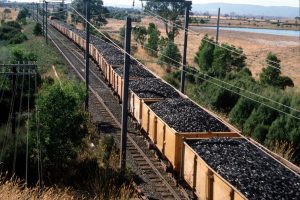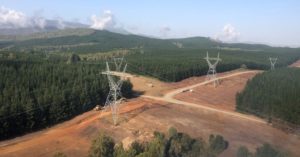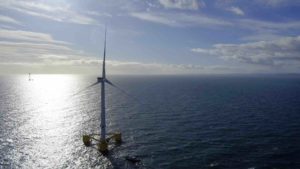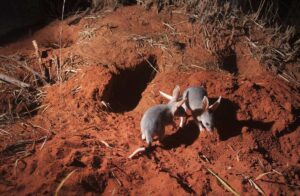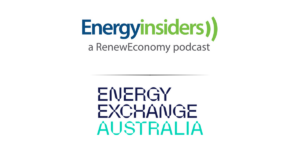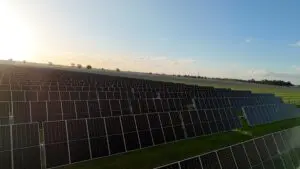Fossil gas, natural gas, methane; not the nicest stuff when you think about it, but it is still piped into half of the nation’s homes, a legacy of Dickensian era coal gas that used to light homes and cause a lot more house fires than we experience today.
In Victoria, for instance, the government is so desperate to find a future use for brown coal that it wants to turn it into something it’s not (a useful portable fuel) or even a fertilizer or diesel/oil .
And once our mucky brown coal has been converted into oil, they will hand the fossil fuel sector another huge subsidy by allowing refineries to pump out CO2, sulphur dioxide and other pollutants without paying a cent, for the privilege of treating our atmosphere like an open sewer.
While trying to make an exhaustive list of subsidies for fossil fuels (it’s a difficult job, as there are just so many), I stumbled across this one … it’s an absolute cracker.
Back in 2011 the Victorian Liberals announced the $100 million, Energy For The Regions program (previously named the Natural Gas Extension Project under Labor) which will hook up dozens of towns to the fossil gas network. Take Avoca, in Victoria’s Goldfields region, as a case in point. The town has around 700 households who are being passed with gas under the program at a cost of $8.39 Million or $12,000 per house passed.
But that subsidy is likely to balloon, because it is likely that only one in five households passed will actually connect. Even the National Party minister Peter Ryan claims that just 30 per cent will take up a gas connection, but experience in Tassie shows that only 20 per cent of households connect to gas in the 10 years after a new network is rolled out.
And Tassie is colder than northern Victoria, so if there was an incentive to opt for a supposedly cheaper fuel source (gas) then it would exist in the major centres of the Apple Isle. This means, that a 20 per cent take-up translates into subsidy to the gas industry of $60,000 a household, a massive handout that taxpayers will never get back through ‘benefits’ from these connections.
What’s more, the price of gas is going up. Based on some old outdated numbers, a media release from Premier Denis Napthine’s website claims that the 140 households (20%) out of 700 who opt for gas will “lower annual household costs by anywhere between $600 and $1200 – “so an average saving of $900.”
However, those numbers fail to take into account recent determinations by the AER allowing the network owners to lift prices along with the upward impact from export price parity, which is going to hike prices even more. So, that $900 will be further reduced as gas bills surge by $160 off the back of gas exports, according to a very conservative estimate from the Grattan Institute.
And the network fee for SP Ausnet West has risen 3 per cent in 2014 alone, adding $40 to average bills – but even more, as a percentage of the total bill, to those who don’t consume much gas, as this is a fixed cost.
So then there is the argument that bringing gas to regions is good for business. Ryan has argued that “the unavailability of natural gas in towns such as Avoca, Lakes Entrance and Heathcote had prevented growth and hindered business.”
“Households and businesses in regional Victoria without access to natural gas are forced to use expensive bottled Liquid Petroleum Gas and electricity,” Ryan said. But the best they could do in Avoca as a business example was a Laundromat that runs off gas fired dryers that “uses between six and 12 bottles of gas a month, depending on the time of the year.”
Fixing up a stinking hot $12,000 annual LPG bill for a small business owner can be achieved much more cheaply than running an $8.39Million pipeline if a proper case benefit analysis had been done and renewable energy options considered.
Five heat pump dryers would have cost around $10,000 ($2000 each) and when connected to Powershop, currently the cheapest electricity provider in Victoria, they would cost just $2,000 a year to run, an immediate saving of $10,000 a year on the Laundromat’s $12,000 annual gas bill.
Show me the numbers commercial:
LPG bottled gas comes in at a net cost of 21 cents a kWh, whereas Powershop charges $0.20/kWh in the Powercor (Western Vic) distribution area. We can therefore efficiently supply the same drying heat with a heat pump (which conservatively will achieve a COP of 6.0 – 1 unit of electrical energy driving the pump to produce 6 units of heat and dehumidification for 600% efficient drying).
The result of crunching the numbers shows that heat pumps would heat for just $0.03385/kWh, a saving of over 84 per cent when compared to the Laundromat’s LPG for the same task. In fact, the shiny new heat pump dryers would have paid themselves off in precisely one year – a dream investment for any sharp business owner or any government wanting to assist Laundromats all over Victoria, not just in a few select locations as they do currently with their regional development aid.
But hang on. Avoca is getting natural gas, right? So, therefore, this piped in fossil gas option should be cheaper than the electric option, right? Actually, wrong. Gas would cost $0.02/MJ or $0.072kWh (and that’s today’s prices, without taking into account the price hikes we’ll be facing shortly). The gas option, which Peter Ryan and Denis Napthine are bringing to the town of Avoca, is 212 per cent more expensive than using heat pumps to do the town’s clothes drying.
Show me the numbers residential:
With gas, 80 per cent of households won’t even choose to hook up, which is our money wasted! So if we want to waste $12,000 pork barrelling or helping out every regional householder (call it what you will), who has or hasn’t got a gas connection, then with a private householder contribution of $6,000 (What they would have spent on connecting up the gas + appliances purchases anyway) each house could be equipped with an 8kW solar system facing North, East and West to maximize self-consumption, three Daikin Ururu Sarara 3.6kW (5kW peak) humidifying reverse cycle air conditioners for heating (83% renewable), a Sanden hot water heat pump (75% renewable), LED lights and an induction cooktop.
And what would be the result? They’d be able to heat their homes to the fullest through winter, cool them in summer and be receiving a $500 annual credit on their electricity bill. No gas bill, no daily standing gas charge for ever-rising network costs, no hike in prices just because Japan or China or wherever has a nuclear disaster or is having a growth spurt. Completely hedged energy costs for the next 20 to 30 years.
At $60,000 per household connected to the natural gas network, this ‘energy for the regions’ program is one of the greatest boondoggle’s (As the American right would call it) this nation has ever seen.
It’s time to do a real cost benefit analysis, Green versus Brown, bring it on! Even if the program’s aim was just to buy votes, a politician is going to get much more traction with a community by eliminating their energy bills and giving them a 22 per cent return on investment, versus giving them the opportunity to pay for an ever more expensive and outdated fuel source.
Furthermore the numbers need to be crunched immediately to halt these extreme gas extensions that are an utter waste of taxpayers’ money stopping the giant hole that is being burnt in Victorian taxpayers’ pockets, so that we can start rolling out cost effective high ROI renewables to rural and regional Victoria, saving us all.
And while we are at it I have a question for… Henry Ergas, Andrew Bolt, Terry McCrann, The IPA, Tony Abbott and Peter Ryan and all their ilk. When will this brown madness stop?


